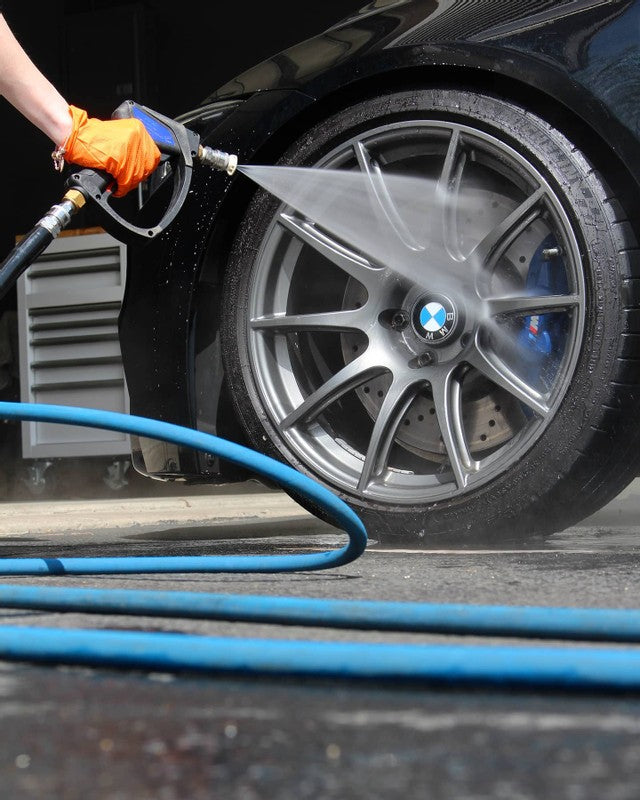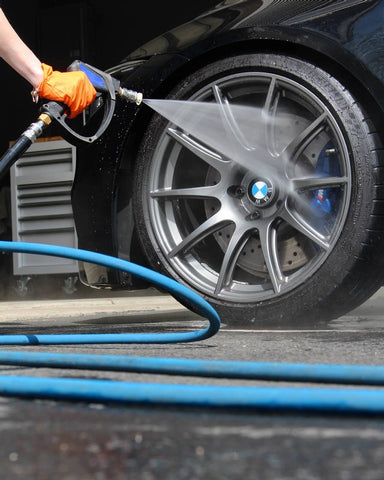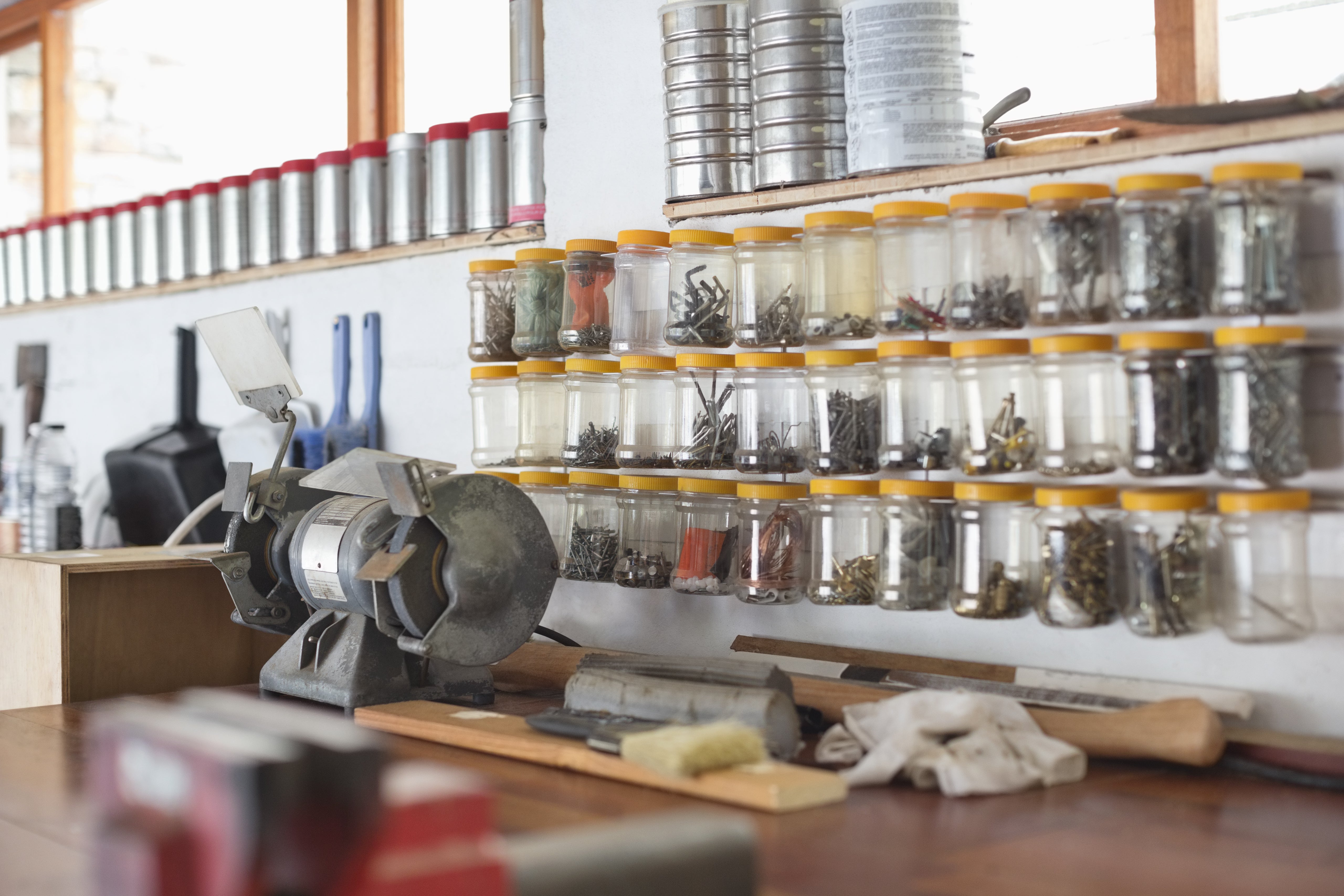
Everything You Need to Know About Pressure Hose
This blog covers everything you need to know about pressure hose. Not sure what kind you need, what the differences are, or how to make the right purchasing decision? Read more to discover the world...

Why do hose colors vary?
Pressure washing hose typically ranges in black, gray, and blue. Some hose may be yellow or orange as a safety feature for very high-pressure, acid, or hot water washes. Generally, one will only experience one of the 3 common colors (black, gray, blue). Let’s get into the nitty-gritty of these 3 hose types.
Black – The black hose is the economy version. Sometimes pressure washers will come with a small black hose, which will oftentimes give out within a few months of use. We offer a more durable black hose with a wrapped carbon base.
Our black hose is the most cost-effective, and longest lasting of the three tiers. One may wonder, “then why is it the least expensive?”. Black hose tends to mark. For a professional worker, or someone working with sidewalks or concrete, a black hose will leave dark marks anywhere it has been dragged. Many professionals will upgrade to a gray or blue hose to avoid marking. However, for someone working with asphalt, a black hose is the way to go!

Gray – The gray hose is the highest upgrade we offer. Made from silicon, a softer material, it is slightly less durable, but will not mark concrete and lighter surfaces. Wrapped hoses are not wrapped over and over as one might think. The marks on the hose that give it a wrapped look are simply an impression left behind during the manufacturing process.

Blue (Obsessed Garage)– Our blue hose is sold exclusively by Obsessed Garage. This hose is silicon-based, like the gray hose. The blue hose differs from our gray hose in that it has a smooth feature instead of a wrapped impression. This means that it will not pick up dirt or debris as it sliding along the ground.
Things to keep in mind!
Marking - all hoses can mark; however, a non-marking hose will blend in with your driveway or sidewalk, leaving much less noticeable markings. For example, gray hose marking will match with a concrete surface, making marks virtually nonexistent.
Wrapped vs Smooth – Wrapped hoses are more flexible than smooth hoses due to the manufacturing process where the lining is compressed, making it thinner, and therefore, more malleable. Smooth hose flexibility is also highly dependent on ambient temperature, as temps drop, smooth hose becomes more rigid. A smooth hose is easier to keep clean, whereas the wrapped hose may pick up debris.
The ends – Most commercial hose will have 3/8” Male NPT threading at either end. One side will have a swiveling end to be installed at the pump, and the other will be rigid which is meant for the spray gun. In the U.S., you will commonly find QC’s installed for ease of use. In the residential and big box store offering, you typically find M22 fittings that require you to twist the accessory onto another product, similar to a garden hose. While the M22 is a sound fitting choice for leak protection, it is inconvenient and can seize after corrosion. To avoid this problem, purchase M22 conversion adaptors to achieve the convenience of Quick Coupling on any setup.
Learn more about Hose with Mike on another TechTuesday!


